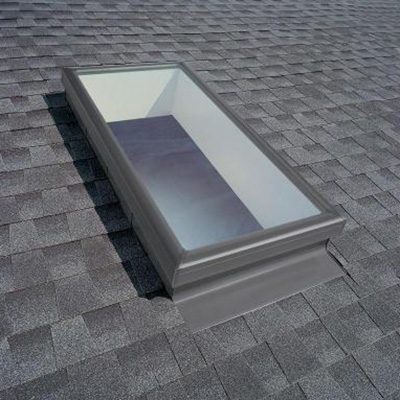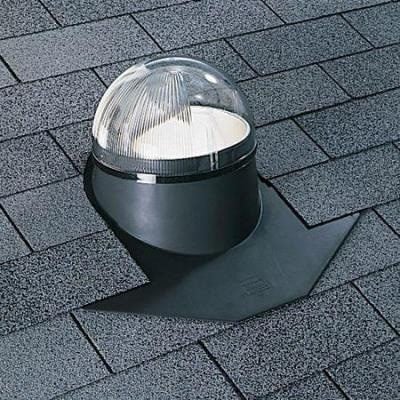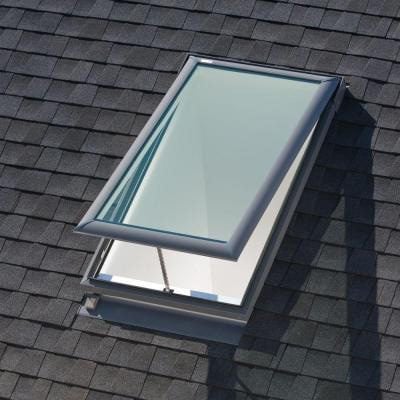Skylights, or roof windows, have been around for more than 150 years. Early tenement housing in England, France and Germany often employed skylights to illuminate top floor dwelling areas. Their popularity skyrocketed in the U.S. from the 1970s through 1990s when builders put them into homes across the country.
But, as all things do, skylights age. Technologies improve and newer equipment replaces the originals. Older skylights become more susceptible to moisture intrusion, seal failure and other normal windows issues. But are they ready for replacement?
Here we’ll discuss what it costs to replace a skylight, the types of replacements available, if you can do it yourself, and when you know it’s time to replace one.
Skylight Replacement Costs
With every home improvement project, costs can vary depending on several variables. The size of the window itself likely will have the greatest effect on replacement cost. Other things to consider include window locating, the steepness of the roof pitch, and whether you need to replace only the glass pane.
Factors like automation play a role in replacement costs, too. Replacing a manual opening skylight window with a remote controlled one will obviously cost more. If your window only needs new caulk and weatherization, the cost will be lower.
According to homedvisor.com, the average cost for replacing a skylight in the U.S. is between $900 and $2,300. Replacing only the glass comes in between $300 and $800. Higher rated glass and dual- or triple-pane glass will be the most expensive.
Types of Skylight Replacements
There are three main types of replacement skylights: fixed, tubular and vented.
Fixed skylights

Fixed skylights are like a typical window — they let light in. Different varieties can include plastic domes to protect the window from falling objects like tree branches and hail.
Tubular skylights

Tubular skylights are typically installed in smaller spaces, like pantries, hallways and closets. A cylindrical tube bridges the gap between the roof and room ceiling. On the roof, a plastic dome lets the light in.
Vented skylights

Vented skylights, like fixed skylights, go where extra light is needed, though they also open and close. Vented skylights are ideal in rooms requiring extra ventilation, like a kitchen, bathroom or laundry room. These open manually or via a motor. You’ll typically find this type of skylight in rooms with high ceilings.
DIY vs. Contractor
Window replacement of any kind requires a decent amount of DIY know-how. You need to remove the window, replace the flashing on the outside, and perform other weatherproofing tasks.
If you’re handy, the process is like replacing a regular window, with one caveat: You’re on top of a roof. Some roofs can be steep and challenging to navigate. If the roof in question is high off the ground with a steep pitch, it might be best to call a contractor.
How to Know if You Need Your Skylight Replaced or Repaired
Water leaking inside your home from around a skylight is the most obvious sign. You could replace the entire window, but in many cases it can be repaired.
The flashing around the outside of the window could be compromised. So could the weatherstripping. These are typically simple fixes and can be done yourself. Cracked glass panes, the age of the window, condensation and discoloration are also indications of skylight failure. Let’s take a look at each.
Cracked Glass Panes
Replace any cracked window. Left untended, the crack can grow and allow moisture in. The question then becomes whether to replace the entire window or just the pane. The age of the window might answer that question.
Window Age
As with all parts of a house, old windows stop performing like when they were new. The average lifespan of a skylight window is around 10 years. It they’re that age or older, it can’t hurt to have them professionally inspected.
Condensation
This also happens as a window ages. If your window has condensation on it, the window sealant may be failing. If left unchecked, this can damage your roof and lead to costly repairs. You don’t want to replace your roof because you ignored an issue with your skylight.
Discoloration
Aging skylight windows may appear discolored, fogged or cloudy from years of exposure to the sun’s UV rays. Fogging may also indicate a failing window seal. Best to have a pro check it out. The solution could be as cheap and simple as buying a cleaning product to improve the look.
Article source here: What to Know About Skylight Replacement


No comments:
Post a Comment